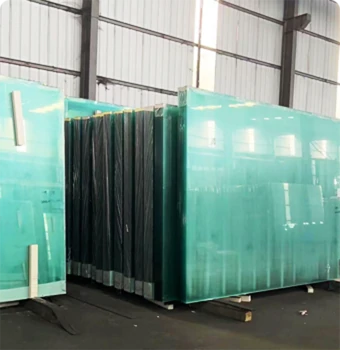From Glass to Mirror The Transformation Journey
The journey from glass to mirror is a fascinating tale of transformation, craftsmanship, and science. Mirrors, which are an integral part of daily life, are not merely pieces of glass; they are a unique intersection of form and function. Understanding this journey not only reveals the intricacies of mirror-making but also illustrates the broader evolution of materials and technology in human history.
The Basic Composition
At its core, a mirror begins as a simple sheet of glass. Glass itself is an ancient material with a history that dates back thousands of years. The process of making glass involves heating a mixture of silica (sand), soda ash, and limestone until it melts and can be shaped. This basic form of glass serves multiple purposes, but its reflective properties are unlocked through a specialized process.
The Creation of a Mirror
To transform glass into a mirror, a reflective coating is applied to the back of the glass sheet. The most common material used for this purpose is silver, although other metals like aluminum are also used. The process typically involves a chemical reaction. Silver nitrates are applied to the glass surface in a controlled environment, resulting in a thin layer of silver that adheres tightly to the glass. Once this layer is applied, the glass is painted over with an opaque, protective coating to ensure the longevity and durability of the mirror.
Technology and Innovation
Over the years, the techniques used to create mirrors have evolved considerably. The earliest mirrors, dating back to 6000 BC, were made from polished stone or metal. The introduction of glass mirrors began in the Roman Empire, but it wasn’t until the 16th century in Venice that glass mirrors became a fashionable luxury. These early mirrors were labor-intensive to produce and expensive, making them accessible only to the wealthy.
The 19th century brought about significant advancements with the invention of the silvering process, which revolutionized mirror production. Not only did this make the process more efficient, but it also allowed for the creation of larger and more affordable mirrors. The development of float glass technology in the 20th century further refined the quality of glass, allowing manufacturers to produce flawless sheets that could be transformed into high-quality mirrors.
glass to mirror
The Art of Reflection
A mirror is not just a functional object; it also possesses an artistic quality. Artists and designers have utilized mirrors as focal points in their work, incorporating them into sculptures, installations, and interior designs. Mirrors can create an illusion of space, manipulate light, and add depth to a setting.
In recent years, designers have explored the concept of interactive mirrors, which incorporate digital technology, enabling them to display information, artwork, or personalized content. These intelligent mirrors signify a move towards merging art and technology, transforming the way we interact with reflective surfaces.
Cultural Significance
Mirrors have long held a significant place in various cultures. They are often seen as symbols of truth and self-reflection. In literature and philosophy, mirrors are used metaphorically to explore themes of identity, reality, and perception. The act of looking into a mirror invites introspection and self-examination.
In many traditions, mirrors are believed to possess mystical properties. In some cultures, they serve as protective objects, capable of warding off evil spirits. Consequently, the symbolism attached to mirrors adds another layer to their significance beyond mere functionality.
Conclusion
The transformation from glass to mirror encapsulates a remarkable interplay of science, craftsmanship, and culture. What was once a simple sheet of glass has evolved into a multi-faceted object integral to our daily lives. Through advancements in technology and creative exploration, the mirror continues to reflect not only our images but also the evolution of human ingenuity.
Whether used for practical reflection, artistic expression, or spiritual significance, mirrors remain a testament to our relationship with self-perception and the world around us. The journey from raw glass to a polished mirror symbolizes a broader transformation—one that invites us to look deeper, consider our identity, and appreciate the beauty that lies in the seamless blending of science and art.
 Afrikaans
Afrikaans  Albanian
Albanian  Amharic
Amharic  Arabic
Arabic  Armenian
Armenian  Azerbaijani
Azerbaijani  Basque
Basque  Belarusian
Belarusian  Bengali
Bengali  Bosnian
Bosnian  Bulgarian
Bulgarian  Catalan
Catalan  Cebuano
Cebuano  Corsican
Corsican  Croatian
Croatian  Czech
Czech  Danish
Danish  Dutch
Dutch  English
English  Esperanto
Esperanto  Estonian
Estonian  Finnish
Finnish  French
French  Frisian
Frisian  Galician
Galician  Georgian
Georgian  German
German  Greek
Greek  Gujarati
Gujarati  Haitian Creole
Haitian Creole  hausa
hausa  hawaiian
hawaiian  Hebrew
Hebrew  Hindi
Hindi  Miao
Miao  Hungarian
Hungarian  Icelandic
Icelandic  igbo
igbo  Indonesian
Indonesian  irish
irish  Italian
Italian  Japanese
Japanese  Javanese
Javanese  Kannada
Kannada  kazakh
kazakh  Khmer
Khmer  Rwandese
Rwandese  Korean
Korean  Kurdish
Kurdish  Kyrgyz
Kyrgyz  Lao
Lao  Latin
Latin  Latvian
Latvian  Lithuanian
Lithuanian  Luxembourgish
Luxembourgish  Macedonian
Macedonian  Malgashi
Malgashi  Malay
Malay  Malayalam
Malayalam  Maltese
Maltese  Maori
Maori  Marathi
Marathi  Mongolian
Mongolian  Myanmar
Myanmar  Nepali
Nepali  Norwegian
Norwegian  Norwegian
Norwegian  Occitan
Occitan  Pashto
Pashto  Persian
Persian  Polish
Polish  Portuguese
Portuguese  Punjabi
Punjabi  Romanian
Romanian  Russian
Russian  Samoan
Samoan  Scottish Gaelic
Scottish Gaelic  Serbian
Serbian  Sesotho
Sesotho  Shona
Shona  Sindhi
Sindhi  Sinhala
Sinhala  Slovak
Slovak  Slovenian
Slovenian  Somali
Somali  Spanish
Spanish  Sundanese
Sundanese  Swahili
Swahili  Swedish
Swedish  Tagalog
Tagalog  Tajik
Tajik  Tamil
Tamil  Tatar
Tatar  Telugu
Telugu  Thai
Thai  Turkish
Turkish  Turkmen
Turkmen  Ukrainian
Ukrainian  Urdu
Urdu  Uighur
Uighur  Uzbek
Uzbek  Vietnamese
Vietnamese  Welsh
Welsh  Bantu
Bantu  Yiddish
Yiddish  Yoruba
Yoruba  Zulu
Zulu 

